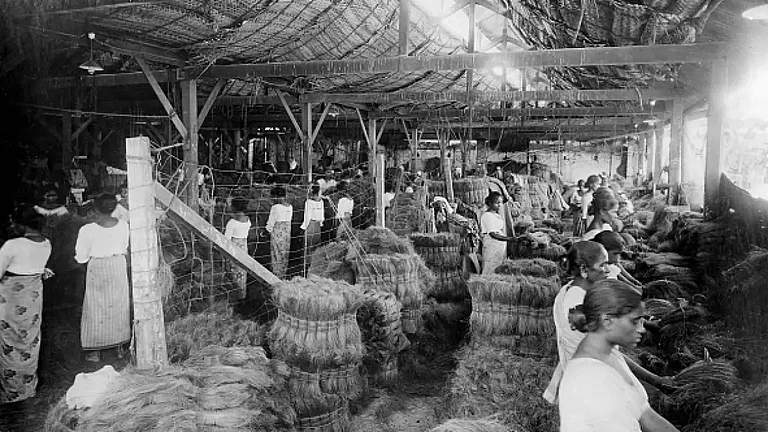For ages you must have often come across the phenomenon of Invisibilisation of women’s work where their work often goes unnoticed, undervalued and systematically neglected. Many times contributions made by women are outrightly dismissed and erased in various sectors especially in the domestic settings and informal sectors. This phenomenon leads to gender inequality, as the contributions made by women are frequently essential for the society but often goes unrecognised or uncompensated.
The Invisible Burden: Plight of Women's Work And The Need For Reform
In Invisible Women: Exposing Data Bias in a World Designed for Men, author Caroline Criado Perez reveals a disturbing truth: much of the world we live in, from healthcare to urban planning, is designed without considering women's unique needs and contributions.
In several societies women usually work in the informal sector where the contributions made by women are often precarious and less regulated. Invisibilisation of women’s work proceeds to have profound implications for women’s economic, social and political equality and addressing it requires collective actions at various levels.
In Invisible Women: Exposing Data Bias in a World Designed for Men, author Caroline Criado Perez reveals a disturbing truth: much of the world we live in, from healthcare to urban planning, is designed without considering women's unique needs and contributions. Perez points out that data on women’s experiences, especially in the workplace, is shockingly sparse or simply nonexistent, leading to policies and systems that ignore half the population.
This "gender data gap" reflects a broader issue—society’s tendency to undervalue and erase women's work. This invisibility has devastating consequences, especially for women in high-risk sectors like healthcare. Recent global statistics further highlight the crisis. According to the World Health Organization, women make up nearly 70% of the global healthcare workforce, yet their safety, well-being, and leadership roles are often overlooked.
In India, where violence against women is alarmingly high, a 2023 National Family Health Survey revealed that over 30% of women have experienced physical or sexual violence, often in spaces where they should feel secure, such as workplaces or homes. Despite these numbers, there remains a glaring lack of comprehensive data on the specific challenges female healthcare workers face—challenges exacerbated by grueling work conditions and inadequate protections.
Gender Power Dynamics and the Vulnerability of Female Healthcare Workers India was shaken on August 9th by the horrifying rape and murder of a 31-year-old postgraduate trainee at RG Kar Medical College in Kolkata. This tragedy, which occurred just days before India's 78th Independence Day, has exposed deep-rooted issues in the safety and working conditions of women, particularly in the healthcare sector. Women in healthcare not only endure long, exhausting hours but are also vulnerable to violence and harassment in their workplaces.
Despite existing laws, such as the Vishakha Guidelines, which mandate safe working environments, these measures fall short in addressing the unique dangers women face in healthcare. The urgent need for reforms in safety protocols, working hours, and stronger legal protections cannot be overlooked if we are to protect those who dedicate their lives to caring for others. The violence against female health workers extends far beyond individual incidents—it is rooted in the systemic gender power relations that underpin healthcare systems globally.
Women in healthcare, especially those from marginalized backgrounds, are more vulnerable to violence due to a lack of visibility, inadequate resources, and social norms that devalue their contributions. These dynamics are further reinforced by economic insecurities, occupational segregation, and limited agency in decision-making processes. The infamous case of Aruna Shanbaug, a nurse who was left in a vegetative state for over 40 years after a brutal sexual assault in 1973, serves as a tragic reminder of the vulnerabilities faced by women in healthcare. Shanbaug’s case sparked a national debate on both euthanasia and the conditions under which female healthcare workers operate, yet meaningful protections for women in healthcare remain scarce. This gendered violence not only stifles the career advancement of female health workers but also contributes to burnout and attrition, further exacerbating the global shortfall in healthcare professionals.
“In India, women can handle workload from a very early age. Many female doctors and nurses are proven to handle things in a very empathetic manner but since we live in a patriarchal and male dominant society. Female workers are often unnoticed despite being equally capable as their male counterparts, even the salaries of male doctors are more than that of females. Even the contributions of male doctors and staff members are more highlighted than that of female doctors and nurses even when they devote equal no. of hours. The hospital policies have a great impact on women’s work in healthcare, the rules and protocols should be the same for both the counterparts in terms of pay scale, working hours, paid leaves, etc. should be equal for both the genders.
Females never deny work, whether in terms of night duties, emergency cases, etc., but we should also be provided with security and rest hours especially in Govt. hospitals where everyone is free to enter, these days threats to female doctors are very common especially after the R.G Kar case, it really gives goosebumps to any female doctor because the workplace is considered to be the safest place. After this incident security is a must along with better sanitation facilities. Females are often under threat in various circumstances. Even in terms of merit, female doctors are less recognised.” says Komal Mishra, a final year MBBS student.
If unchecked, the structural issues and workplace violence faced by women in healthcare could hinder efforts to meet global health goals, including universal health coverage. Empowering female health workers and addressing these imbalances is essential for creating safer work environments and improving healthcare outcomes.
The Urgent Need for Reform: Addressing the Safety of Women in Healthcare Globally, countries like the United States, the United Kingdom, and Canada have implemented proactive measures to protect healthcare workers. India, however, still lags in providing comprehensive protections. The Prevention of Violence Against Healthcare Professionals and Clinical Establishments Bill, 2022, remains unpassed, leaving healthcare workers vulnerable. States like Kerala have taken steps, passing the Kerala Healthcare Service Persons and Healthcare Service Institutions (Prevention of Violence and Damage to Property) Amendment Bill, 2023, which imposes stricter penalties for violence against healthcare workers. However, national-level reforms are critical to ensure consistent and robust protection across the country. Women's safety and empowerment must be prioritised through policies that recognize the value of their work and provide the necessary safeguards to enable them to thrive without fear of violence or marginalisation.



